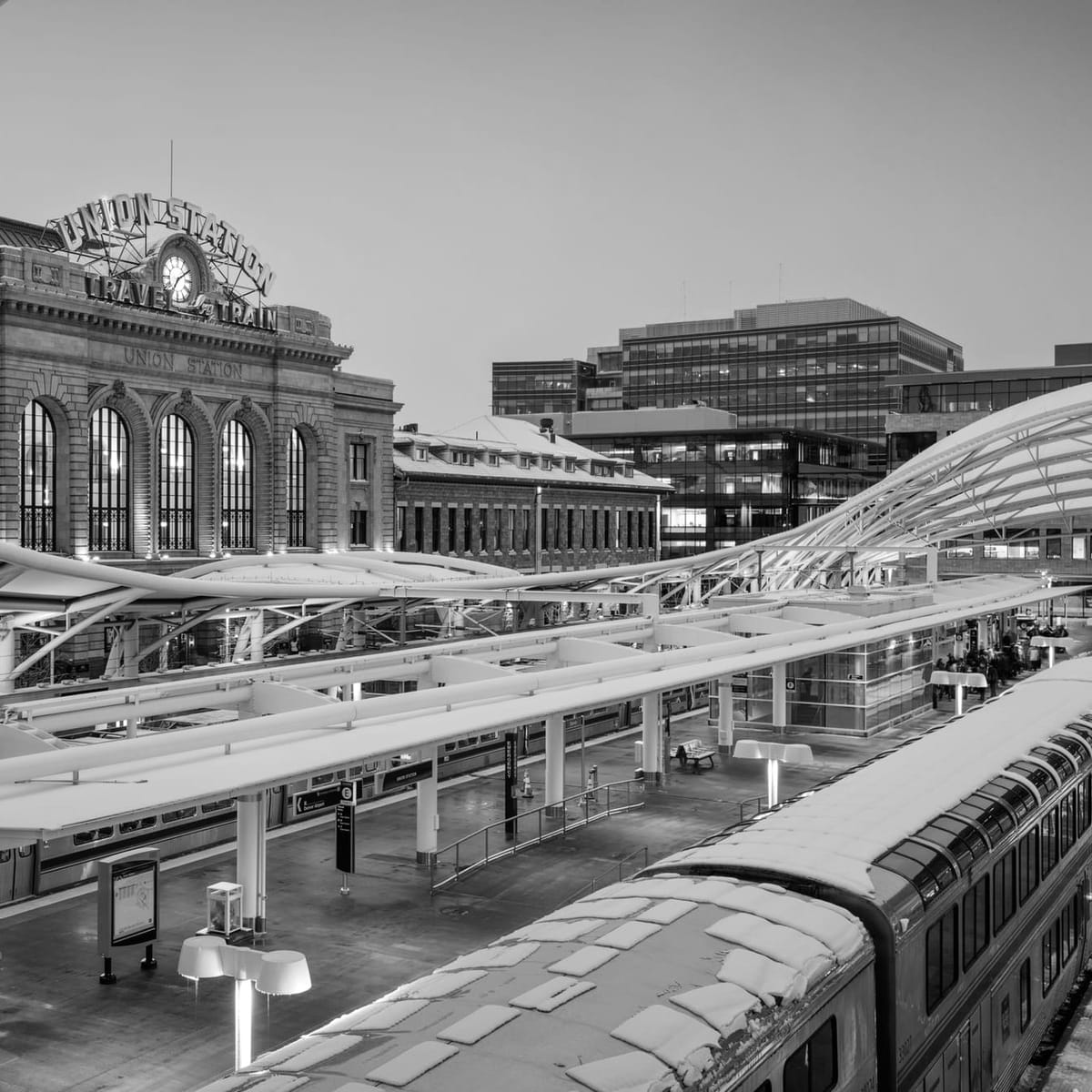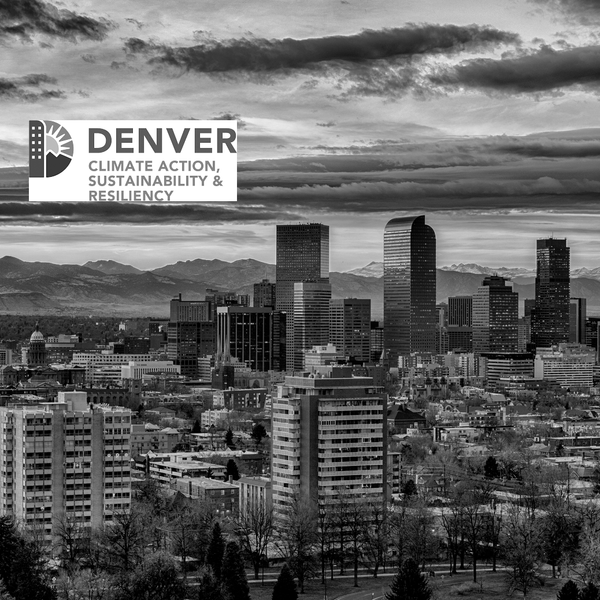Revitalizing Downtown Denver: A Commercial Real Estate Perspective

Downtown Denver stands at a crossroads. Once a bustling hub of commerce, culture, and innovation, the pandemic's lingering effects and shifts in economic trends have left its streets quieter and its commercial spaces less vibrant. I believe Denver’s recovery hinges on a coordinated, multi-faceted approach. By prioritizing safety, economic incentives, residential growth, and community collaboration, the city can expedite its journey toward revitalization.
The Current State of Downtown Denver
Recent data paints a challenging picture. According to the Common Sense Institute, downtown Denver's foot traffic has recovered to just 67% of its pre-pandemic levels—placing it 16th lowest among 55 U.S. cities. Office vacancy rates have doubled since 2019, standing at an unprecedented 24% in 2023. High commercial rents persist despite declining occupancy, and the perception of safety remains a significant deterrent for visitors and businesses alike.
To turn the tide, Denver must embrace bold steps to attract residents, businesses, and visitors while addressing systemic challenges such as crime, homelessness, and remote work trends.
1. Prioritizing Safety and Security
Safety is the foundation of any thriving downtown. Surveys from the Downtown Denver Partnership reveal that a "sense of safety and security" is the single largest factor deterring people from visiting downtown. To combat this, Denver must:
- Enhance Police Presence: Increasing visible law enforcement in high-traffic areas can deter crime and improve public confidence.
- Expand Community Policing: Engaging with local businesses, residents, and visitors through community-focused policing can build trust and foster collaboration.
- Leverage Technology: Deploying smart surveillance systems, improved lighting, and emergency response tools can create a safer environment for everyone.
- Address Root Causes of Crime: Expanding resources for mental health and addiction treatment, as well as supporting Denver’s drug court initiatives, can reduce repeat offenses and help those in need.
2. Encouraging Economic Growth
The economic vitality of downtown Denver relies on its ability to attract and retain businesses. High vacancy rates and burdensome regulations are hindering recovery. Here's how the city can support commercial growth:
- Review and Adjust Regulations: Policies like Denver’s Energize Denver initiative and high minimum wage rates, while well-intentioned, place significant financial strain on businesses. A collaborative approach with commercial stakeholders is needed to strike a balance between sustainability and economic feasibility.
- Offer Tax Incentives: Targeted tax breaks and financial incentives can encourage businesses to establish or expand their presence downtown, offsetting the high costs of rent and compliance.
- Foster Public-Private Partnerships: Collaboration between the city, developers, and local organizations can drive investment in key projects, such as infrastructure upgrades and mixed-use developments.
3. Expanding Residential Opportunities
One of the most effective ways to breathe life into downtown Denver is to increase its residential population. A vibrant residential community supports local businesses and creates a sense of energy and activity. To achieve this, the city should:
- Encourage Mixed-Use Developments: Converting vacant office spaces into residential units can address both high vacancy rates and housing shortages. This strategy has proven successful in other cities and aligns with shifting preferences for urban living.
- Support Affordable Housing Initiatives: Ensuring a mix of market-rate and affordable housing options will attract a diverse range of residents, from young professionals to families and retirees.
- Streamline Development Processes: Simplifying zoning and permitting for residential projects can accelerate construction timelines and attract developers.
4. Adapting to Remote Work Trends
Remote and hybrid work models have reshaped the demand for office space. Denver, which boasts one of the highest remote work rates in the nation, must adapt to this new reality by:
- Reimagining Office Spaces: Promoting flexible, adaptable office designs that cater to hybrid work models can make downtown Denver more appealing to businesses.
- Diversifying Downtown’s Offerings: By enhancing the area’s amenities—including dining, entertainment, and cultural attractions—Denver can attract workers who come downtown for reasons beyond the office.
- Supporting Co-Working Spaces: Encouraging the growth of co-working hubs can provide remote workers with collaborative environments and drive foot traffic.
5. Promoting Downtown as a Destination
Downtown Denver’s success hinges on its ability to attract visitors. Marketing and programming efforts should focus on making downtown a must-visit destination for locals and tourists alike:
- Host Events and Festivals: From music festivals to farmers’ markets, regular events can draw crowds and showcase the area’s vibrancy.
- Invest in Public Spaces: Enhancing parks, plazas, and pedestrian zones can create inviting spaces for people to gather and linger.
- Celebrate Local Culture: Highlighting Denver’s unique identity through public art, historic preservation, and cultural programming can differentiate it from other cities.
6. Leveraging Data and Metrics
Effective decision-making requires a clear understanding of what works. The city should:
- Monitor Progress: Regularly track key metrics, such as foot traffic, crime rates, and business openings, to gauge the impact of recovery initiatives.
- Share Success Stories: Publicizing improvements in safety, economic activity, and community engagement can shift public perception and attract further investment.
7. Building Regional Collaboration
Denver’s recovery cannot occur in isolation. Surrounding neighborhoods and cities play a crucial role in the broader ecosystem. Collaborative efforts can include:
- Distributing Services and Resources: Spreading homeless services and affordable housing across the metro area can reduce strain on downtown while improving access for those in need.
- Coordinating Transit Improvements: Enhancing connectivity between downtown and other areas through reliable, affordable public transit can increase accessibility and reduce parking challenges.
- Engaging Stakeholders: Bringing together representatives from business, government, and nonprofit sectors ensures diverse perspectives and shared accountability.
The Path Forward
Revitalizing downtown Denver is not just about recovery; it’s about reinvention. The post-pandemic era presents an opportunity to create a downtown that is safer, more inclusive, and better equipped to meet the needs of its residents, workers, and visitors. By prioritizing safety, fostering economic growth, expanding residential opportunities, and embracing collaboration, Denver can position itself as a model for urban recovery.
All that said, I’m optimistic about Denver’s future. The challenges are significant, but so are the opportunities. By working together, we can ensure that downtown Denver remains a vibrant, dynamic hub that reflects the best of our city’s spirit and resilience.





